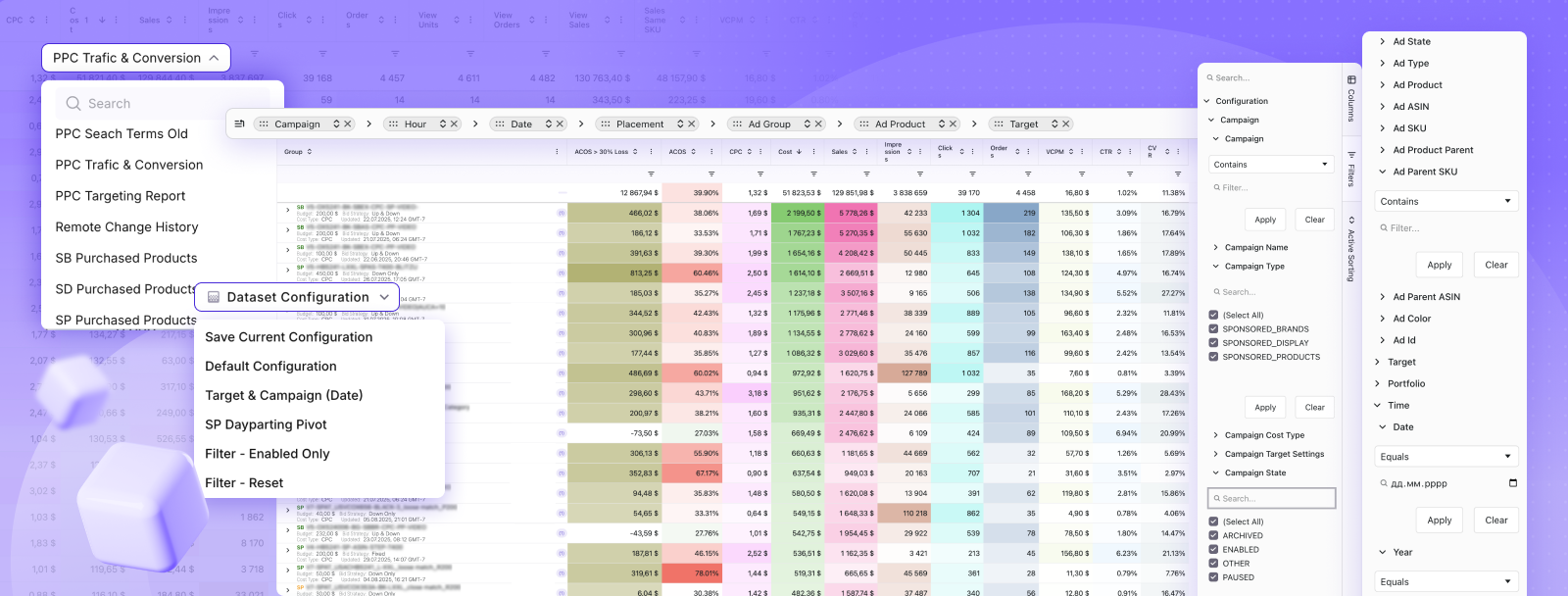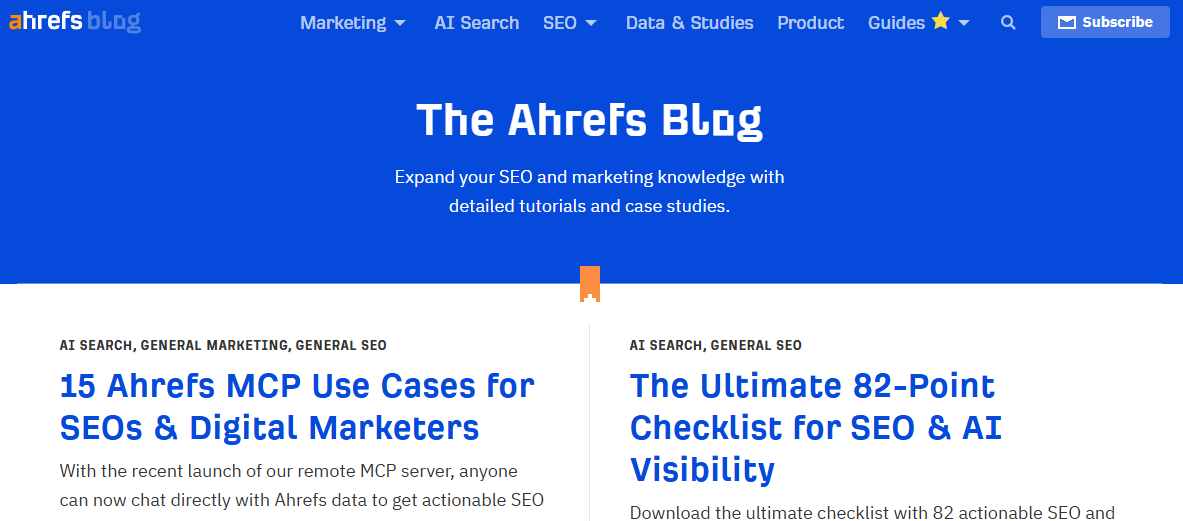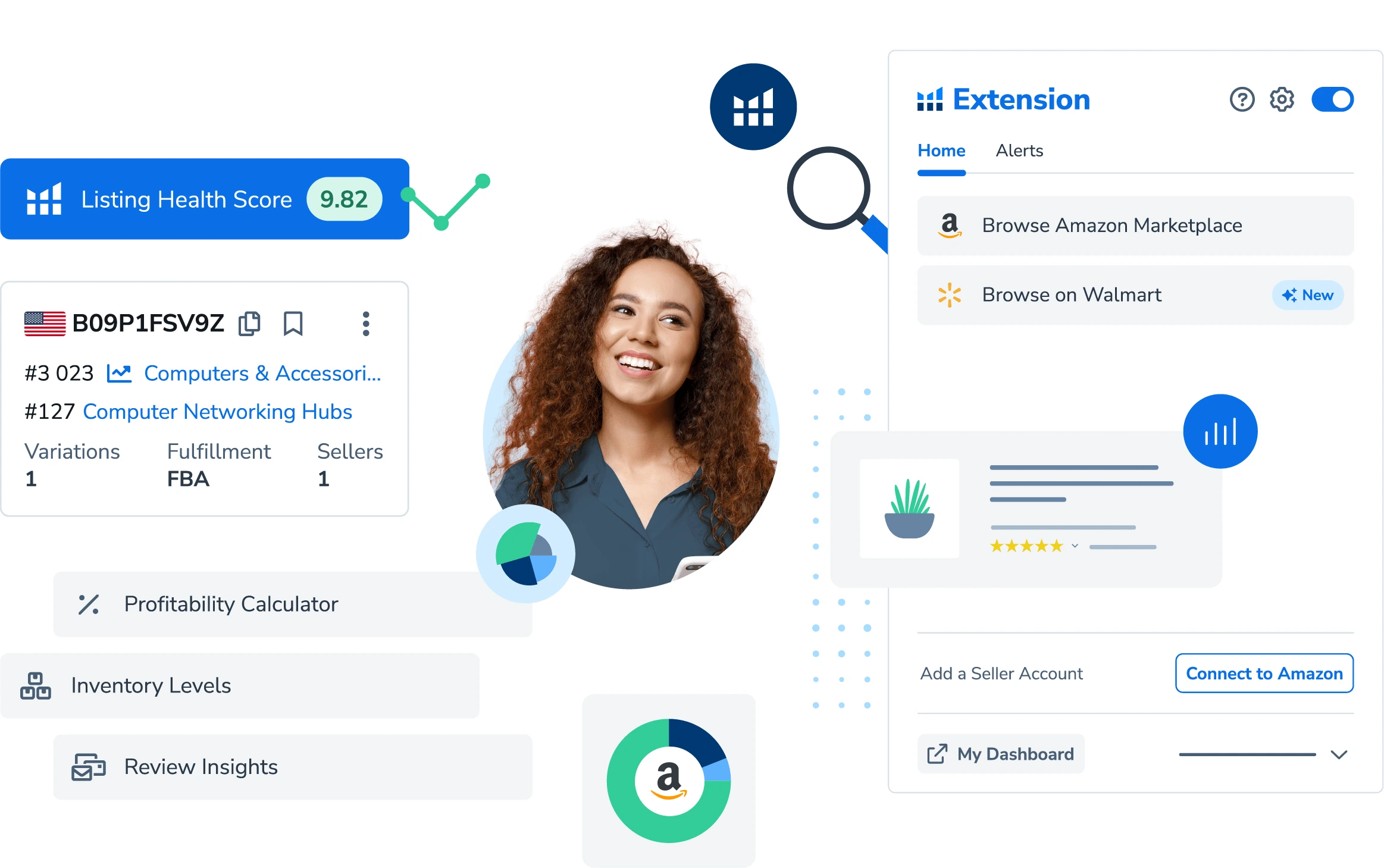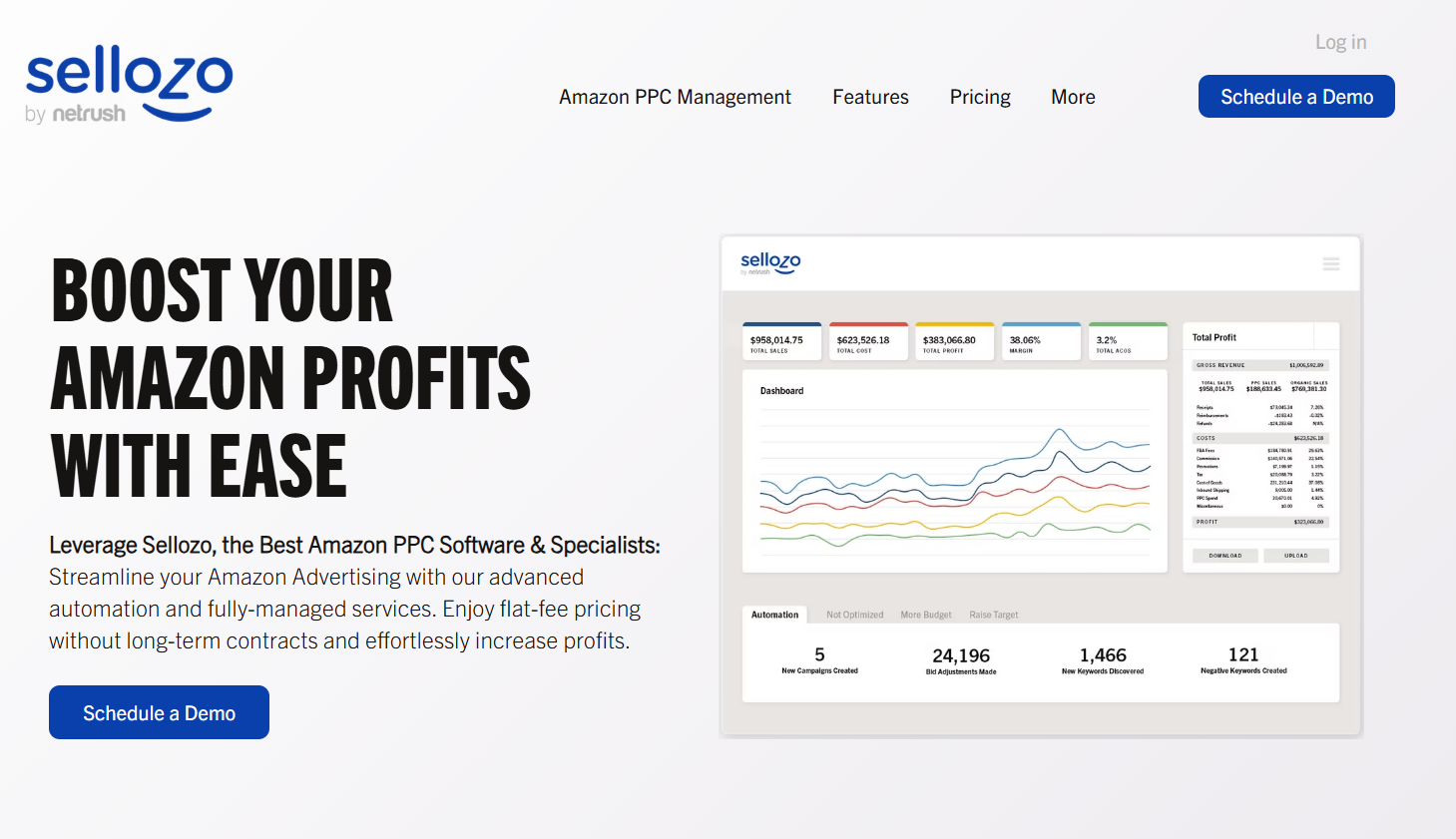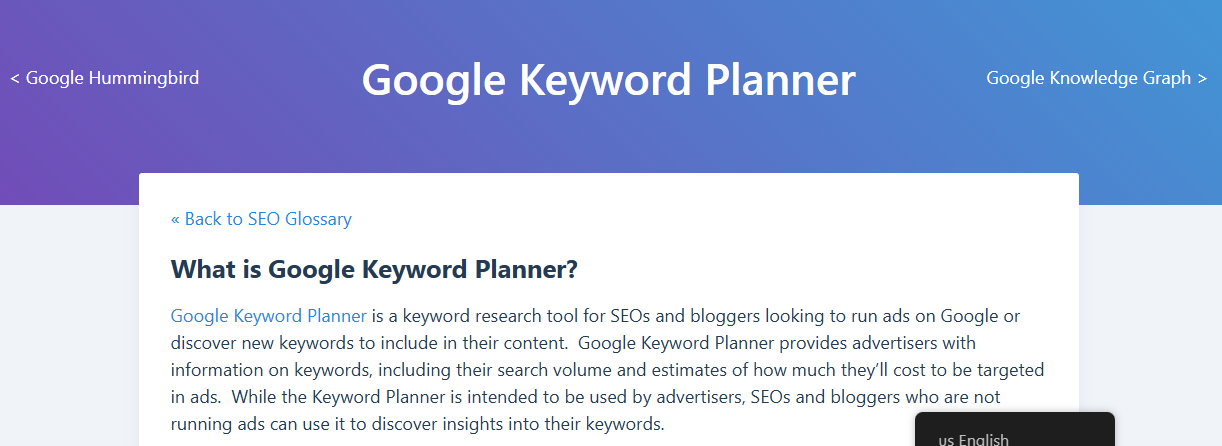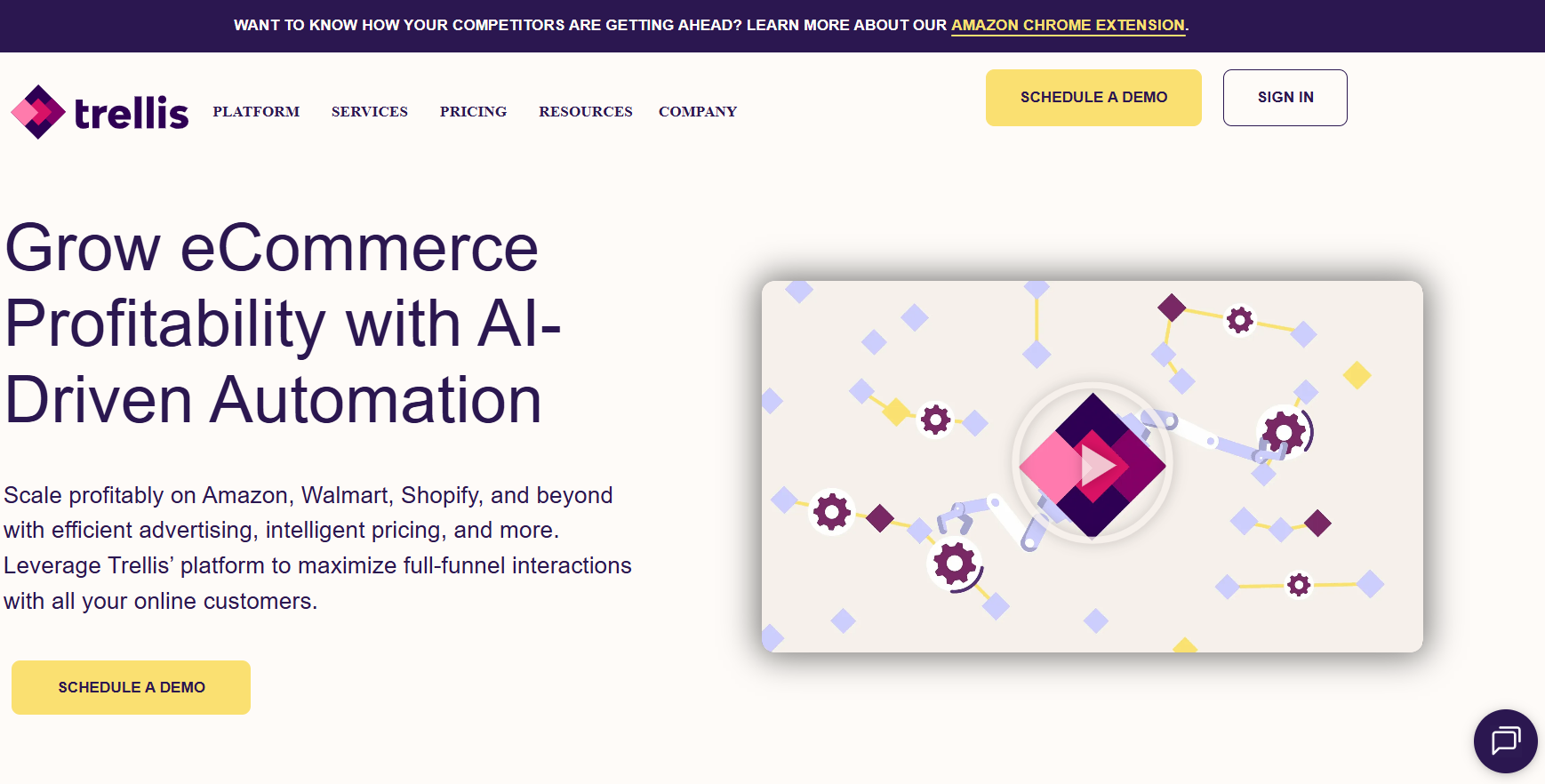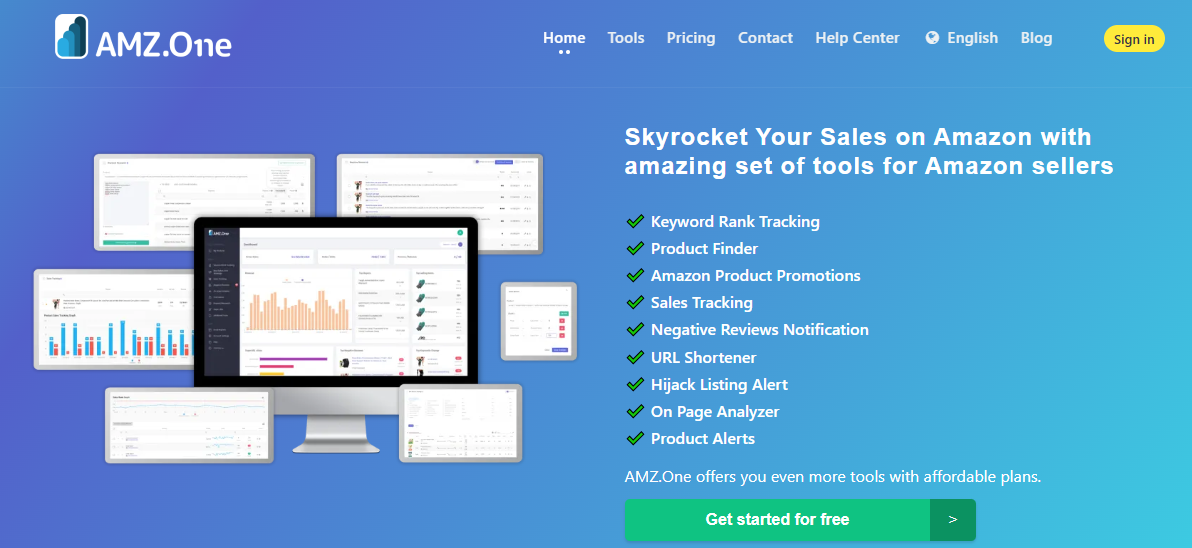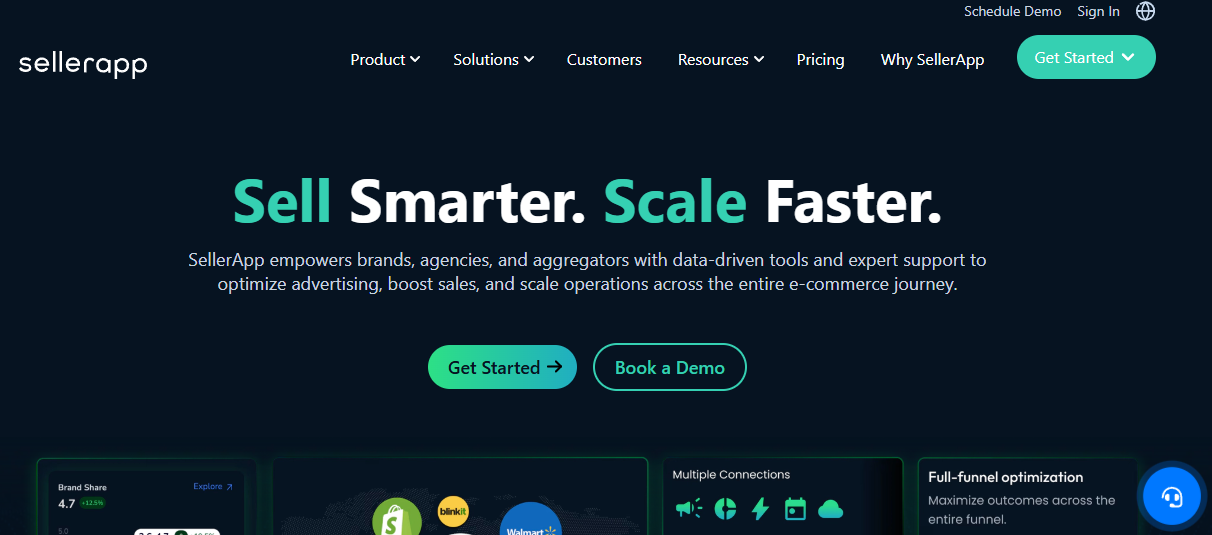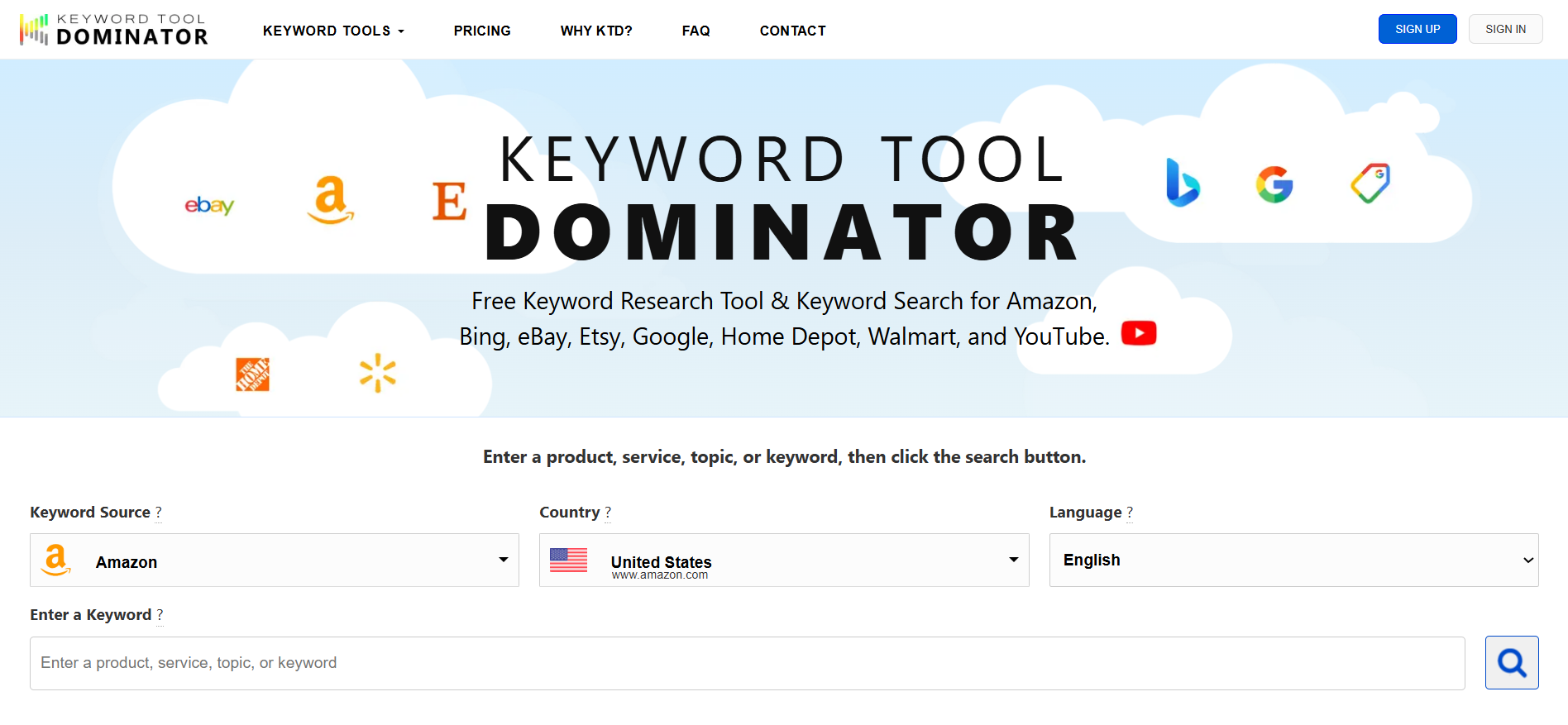Top Amazon Generic Keyword Generator Tools to Boost Visibility
Finding the right keywords on Amazon isn’t just about chasing trends – it’s about understanding how real shoppers think. The tricky part? People rarely search for your product by its brand name. They use short, everyday phrases like “wireless earbuds” or “coffee grinder.” That’s where generic keyword generators come in. These tools help sellers spot the common search terms customers actually type, giving listings a better shot at being discovered.
In this guide, we’ll look at some of the most reliable tools that simplify this process. Whether you’re a new seller or already managing multiple ASINs, these keyword generators can help you build smarter campaigns, optimize listings, and make your products easier to find in Amazon’s crowded marketplace.
WisePPC: Clear Insights for Sellers
At WisePPC, we’ve built a platform that helps sellers make sense of what’s really happening across their marketplace performance. As an Amazon Ads Verified Partner, we use official integrations and best practices to ensure that our users get accurate, real-time insights into what drives their sales – whether it’s ads or organic reach. Our goal is simple: to give businesses a clear, unified view of their data so they can make smarter decisions without wasting hours digging through spreadsheets. With WisePPC, teams can monitor performance across Amazon, Shopify, and other platforms all in one dashboard, track key metrics like ACOS or TACOS, and react faster to what actually matters.
We designed WisePPC to simplify the complexity of managing ads at scale. Users can apply bulk edits across thousands of campaigns, filter results for deep analysis, and visualize trends with historical charts that go beyond Amazon’s limited data storage. Our advanced tools, like gradient-based metric highlighting and placement performance analysis, make it easy to spot opportunities and fix inefficiencies in seconds. And we’re not stopping there – features like AI-driven campaign adjustments, dynamic repricing, and automated inventory forecasting are on the way. Everything we build is focused on helping sellers grow faster, waste less, and make decisions that are driven by real data, not guesswork.
Key Highlights:
- Unified analytics connecting ad and organic keyword data
- Real-time tracking across marketplaces
- Flexible filters for keyword and campaign analysis
- Inline editing for bids and budgets
- Long-term historical data for trend discovery
- AI-driven optimization tools in progress
Who it’s best for:
- Sellers managing multiple campaigns
- Teams improving keyword targeting and performance
- Agencies handling marketplace analytics for clients
- Businesses wanting clear visibility into both ad and organic data
Contact Information:
- Website: wiseppc.com
- LinkedIn: www.linkedin.com/company/wiseppc
- Facebook: www.facebook.com/61573154427547
- Instagram: www.instagram.com/wiseppc
Find Generic Amazon Keywords That Drive Sales with These Tools
1. Keyword Tool for Amazon
Keyword Tool for Amazon makes it easier for sellers to figure out what people are actually typing when they shop on Amazon. Instead of guessing which words might work, it uses Amazon’s own autocomplete feature to pull real search suggestions in seconds. You just enter a seed keyword, and the tool generates a long list of related terms that shoppers are already using. Those keywords can then be added to product titles, descriptions, or ad campaigns to help listings show up more often.
The nice thing about this tool is how simple it is to use. You can pick any regional Amazon site, choose a language, and get keyword results that match your target market. The tool even sorts suggestions the same way Amazon does, so the most popular ones appear first. It’s a quick, practical way for sellers to discover new search terms, improve visibility, and get more organic traffic without needing a big advertising budget.
Key Highlights:
- Uses Amazon autocomplete to collect keyword ideas
- Offers results for different regions and languages
- Generates long-tail keywords for listing optimization
- Shows keywords in the same order as Amazon’s relevance
- Helps boost organic visibility with minimal effort
Who it’s best for:
- Amazon FBA sellers expanding their keyword lists
- Affiliates optimizing listings for search reach
- Small sellers who prefer simple keyword tools
- Anyone who wants quick, relevant Amazon keyword ideas
Contact Information:
- Website: keywordtool.io
- Address: 9/F, Suite 901 Hing Yip Commercial Centre, 272-284 Des Voeux Road, Central, Hong Kong
- Phone: +852 5803 8880
2. Ahrefs Keyword Generator
Ahrefs Keyword Generator gives sellers a clear view of how people search for products on Amazon, and it goes beyond basic keyword suggestions. It shows search volume for different countries and includes extra metrics like how often users click listings or search for the same term again. Those small details can help sellers figure out which keywords actually bring attention to products and which ones don’t.
Another useful part is the ability to see what keywords competitors are ranking for. By analyzing an Amazon listing in Ahrefs Site Explorer, sellers can find new keyword ideas and understand which phrases drive traffic from both Amazon and Google. Everything can be saved, organized, and exported easily, which keeps research tidy and shareable without dealing with messy spreadsheets.
Key Highlights:
- Shows keyword data across 170+ countries
- Includes insights like clicks per search and return rate
- Reveals keywords competitors rank for
- Lets users save and export keyword lists
- Offers both local and global search volumes
Who it’s best for:
- Amazon sellers running international campaigns
- Teams researching keyword potential in new markets
- Marketers comparing competitor keyword data
- Agencies managing clients across multiple regions
Contact Information:
- Website: ahrefs.com
- Email: [email protected]
- Facebook: www.facebook.com/Ahrefs
- Instagram: www.instagram.com/ahrefs
- LinkedIn: www.linkedin.com/company/ahrefs
- Twitter: x.com/ahrefs
3. Helium 10 Magnet
Helium 10’s Magnet tool helps Amazon sellers find the right generic keywords without all the trial and error. It highlights terms that have high search volume but aren’t overcrowded with competition, which can make a big difference when you’re trying to get noticed. The filters are flexible too, so you can narrow things down by volume, competitors, or other factors that matter to your products. Instead of randomly picking keywords, sellers get a clear, data-backed list to work with.
Even though it’s part of a bigger toolkit, Magnet on its own covers the essentials of keyword research. It helps build targeted keyword lists for both SEO and paid ads, making it easier to optimize listings from every angle. Whether someone’s just starting out or already managing several products, it’s a practical tool for finding terms that bring steady traffic and better visibility.
Key Highlights:
- Finds high-volume, low-competition keywords
- Offers detailed filters to refine results
- Supports both PPC and SEO keyword planning
- Helps test and validate product ideas
- Fits neatly into broader Amazon optimization workflows
Who it’s best for:
- Amazon sellers improving PPC and SEO campaigns
- Brands exploring product opportunities
- Teams managing multiple listings efficiently
- Beginners who need a guided keyword research tool
Contact Information:
- Website: www.helium10.com
- LinkedIn: www.linkedin.com/company/helium10
- Facebook: www.facebook.com/Helium10Software
- Instagram: www.instagram.com/helium10software
- Twitter: x.com/H10Software
4. Sellozo
Sellozo helps Amazon sellers handle their ad campaigns without getting buried in the details. Their platform blends automation with expert input to keep everything running smoothly, from keyword discovery to bid adjustments. With built-in AI tools, they can schedule ads at the best times, manage bids automatically, and fine-tune targeting as performance data comes in. Instead of trying to guess which keywords are working, users can see it right there in the analytics dashboard and adjust on the spot.
They also cover all major Amazon ad formats, including Sponsored Products, Sponsored Brands, and Display campaigns. The system gives a clear view of how each campaign performs, where the budget is going, and which keywords are actually worth keeping. It’s a practical setup for sellers who want to make smarter use of their ad spend without micromanaging every setting.
Key Highlights:
- Automated bid and scheduling tools
- AI-based keyword optimization
- Support for different Amazon ad types
- Simple performance tracking and reporting
- Budget control to avoid wasted spend
Who it’s best for:
- Amazon sellers juggling multiple campaigns
- Teams looking to cut down on manual ad work
- Agencies managing PPC for various clients
- Businesses wanting both automation and expert oversight
Contact Information:
- Website: www.sellozo.com
- Facebook: www.facebook.com/sellozo
- LinkedIn: www.linkedin.com/company/sellozo
- Instagram: www.instagram.com/sellozoofficial
- Twitter: x.com/sellozoofficial
5. Google Keyword Planner
Google Keyword Planner is a reliable tool for finding keyword ideas that people are actually searching for. While it’s made for Google Ads, a lot of Amazon sellers use it to explore generic search terms that can help shape their product listings. You type in a few phrases related to what you sell, and the tool shows similar keywords along with how often they’re searched and how competitive they are. It’s a straightforward way to figure out which terms might bring in more visibility.
The tool also lets users create keyword plans and see forecasts based on potential clicks and impressions. This helps them spot which terms could perform best before spending money on ads. For Amazon sellers, it’s useful because it gives a broader view of customer search behavior outside Amazon, which can help fine-tune listings or ad campaigns.
Key Highlights:
- Suggests keyword ideas based on real search activity
- Shows estimated search performance and competition
- Lets users plan and organize keyword lists
- Includes local and global keyword data
- Offers forecasts for clicks and impressions
Who it’s best for:
- Amazon sellers researching keyword trends
- Marketers running both Google and Amazon campaigns
- Teams testing new product ideas through search data
- Businesses exploring broad keyword strategies
Contact Information
- Website: business.google.com
- Twitter: x.com/googleads
- Phone: 18008387971
6. Trellis Amazon Keyword Research Tool
Trellis’ keyword research tool is built for sellers who want a closer look at how their keywords actually perform on Amazon. It finds keyword opportunities, checks how competitive they are, and adjusts bids automatically based on real-time results. Instead of chasing random keywords, sellers can use the tool to focus on ones that are both relevant and cost-effective. It’s designed to take some of the heavy lifting out of PPC management while still keeping users in control.
Beyond finding new keywords, Trellis also helps improve listings and ad content. It uses AI to analyze what’s working and tweak content so clicks are more likely to convert. There’s even a Chrome extension that tracks keywords while browsing Amazon, which makes it handy for quick research. Overall, it’s a practical option for anyone who wants their keyword work to feel more like strategy and less like guesswork.
Key Highlights:
- Automated keyword research and bid optimization
- Checks keyword difficulty and competition levels
- AI-based content improvements
- Tracks performance with a browser extension
- Focuses on efficiency across campaigns
Who it’s best for:
- Amazon sellers fine-tuning their PPC strategies
- Teams managing multiple product campaigns
- Marketers focused on keyword performance and conversion
- Businesses that want continuous keyword insights
Contact Information:
- Website: gotrellis.com
- Email: [email protected]
- Facebook: www.facebook.com/GoTrellis
- Instagram: www.instagram.com/go.trellis
- LinkedIn: www.linkedin.com/company/gotrellis
- Twitter: x.com/go_trellis
- Address: 515 Legget Drive, Suite 900, Ottawa, ON, K2K 3G4
- Phone: 1 (888)673-4543
7. AMZ.One
AMZ.One’s Keyword Research Tool helps sellers get a clear picture of how their products show up in Amazon searches. It shows which keywords their listings already rank for and which ones are actually bringing in traffic. Instead of guessing what people type into Amazon, sellers can see the exact search terms driving visibility and use that info to fine-tune titles, descriptions, or backend keywords. It’s a simple way to figure out what’s working and what could use a bit more attention.
The tool is part of a larger set of features that includes rank tracking, sales monitoring, and listing analysis. Everything connects in one place, so users can see how keyword performance ties into overall sales and ranking changes. It’s practical, easy to navigate, and built for sellers who want to spend more time improving their listings and less time digging through spreadsheets.
Key Highlights:
- Shows which keywords listings already rank for
- Helps identify search terms that bring in traffic
- Links keyword data with sales and ranking insights
- Includes tools for tracking and optimization
- Works together with other Amazon analytics features
Who it’s best for:
- Amazon sellers looking to boost search visibility
- Teams managing product performance and rankings
- Marketers refining listings with real keyword data
- Businesses using connected Amazon optimization tools
Contact Information:
- Website: amz.one
- Email: [email protected]
- Facebook: www.facebook.com/TheAMZOne
- Instagram: www.instagram.com/amz.one.business
- LinkedIn: www.linkedin.com/in/amzone
8. SellerApp
SellerApp’s Keyword Research Tool helps sellers uncover what shoppers are actually searching for on Amazon. It pulls up thousands of relevant terms, shows how they perform, and lets users track how their rankings change over time. With built-in reverse ASIN lookups and PPC filters, sellers can compare their keyword strategies to competitors and figure out where they can improve. The tool also covers multiple Amazon marketplaces, which comes in handy for anyone selling internationally.
Beyond keyword research, it’s about keeping everything organized and actionable. Sellers can export their keyword lists, set up ranking tracking, and use filters to zero in on the most useful terms. The interface makes it easy to spot patterns instead of getting lost in data. For anyone who wants a realistic view of what drives search visibility, SellerApp brings all the pieces together in one place.
Key Highlights:
- Discovers relevant keywords across categories and regions
- Includes reverse ASIN analysis for competitive research
- Tracks keyword rankings and performance
- Lets users export and filter keyword lists
- Supports research for multiple Amazon marketplaces
Who it’s best for:
- Amazon sellers improving their PPC and SEO listings
- Teams comparing keyword strategies with competitors
- Marketers optimizing listings across different countries
- Brands managing keyword performance for several products
Contact Information:
- Website: www.sellerapp.com
- Email: [email protected]
- Facebook: www.facebook.com/sellerapp
- Instagram: www.instagram.com/sellerapp_insta
- LinkedIn: www.linkedin.com/company/sellerapp
- Twitter: x.com/SellerApp_Inc
- Address: 4819 Bryant Mdws Dr, Spring, TX 77386, United States
- Phone: +1-737-225-3338
9. Keyword Tool Dominator
Keyword Tool Dominator pulls live data straight from Amazon’s search bar to help sellers find the phrases real shoppers use. It’s a quick way to spot trending or popular keywords without having to guess what people are typing. Sellers can narrow results by department, region, or search mode, and even see which keywords are “Hot” right now. It’s a straightforward tool that saves time and keeps research grounded in what’s actually happening on the marketplace.
It also lets users sort keywords by popularity or frequency, so they can figure out which ones show up most often and deserve priority in listings. Results can be exported and filtered for deeper analysis, which makes it easy to manage large lists of search terms. Whether it’s for books, clothing, or niche categories, the tool gives sellers a clear window into buyer intent and helps them adjust listings accordingly.
Key Highlights:
- Uses real-time Amazon search data for keyword ideas
- Lets users filter results by category, country, and search type
- Identifies trending and frequently searched keywords
- Includes keyword frequency and popularity scoring
- Allows easy export and sorting of keyword lists
Who it’s best for:
- Amazon sellers doing hands-on keyword research
- KDP authors refining book titles and descriptions
- Teams tracking search trends for specific products
- Marketers adjusting listings based on live buyer behavior
Contact Information:
- Website: www.keywordtooldominator.com
Conclusion
Finding the right keywords on Amazon isn’t just about stuffing your listing with popular terms anymore. It’s about understanding how real shoppers search, what phrases actually lead to clicks, and which ones quietly drive consistent sales over time. Tools like WisePPC, SellerApp, and Keyword Tool Dominator make that process a lot less overwhelming by turning guesswork into something you can actually measure and act on.
Each one has its own angle. Some focus more on tracking and data, while others help you spot hidden trends or competitor strategies. The real takeaway, though, is that using a keyword generator isn’t about chasing every single term – it’s about finding the ones that fit your product naturally and make sense for your audience. When you combine good data with a bit of common sense, you end up with listings that not only show up in searches but actually get people to click. And that’s really the point.
Join the WisePPC Beta and Get Exclusive Access Benefits
WisePPC is now in beta — and we’re inviting a limited number of early users to join. As a beta tester, you'll get free access, lifetime perks, and a chance to help shape the product — from an Amazon Ads Verified Partner you can trust.
 No credit card required
No credit card required
 Free in beta and free extra month free after release
Free in beta and free extra month free after release
 25% off for life — limited beta offer
25% off for life — limited beta offer
 Access metrics Amazon Ads won’t show you
Access metrics Amazon Ads won’t show you
 Be part of shaping the product with your feedback
Be part of shaping the product with your feedback



